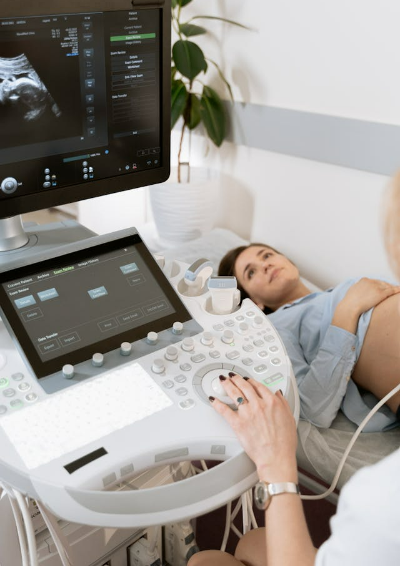Medical Malpractice in the Age of Telemedicine
 In recent years, the healthcare industry has been changed by the use of telemedicine. Medical consultations through video chat, telephone calls, and online chats have become common. One annual report for 2021 showed that 37 percent of adults in the United States had used telemedicine in the previous 12 months.
In recent years, the healthcare industry has been changed by the use of telemedicine. Medical consultations through video chat, telephone calls, and online chats have become common. One annual report for 2021 showed that 37 percent of adults in the United States had used telemedicine in the previous 12 months.
California, like many other states, has recognized the potential benefits of telemedicine. One benefit is that those in remote or underserved areas can receive healthcare.
Yet, with innovation comes challenges. One rising concern in this new age of telemedicine is the potential for medical malpractice.
What Is Telemedicine?
The term “telemedicine” refers to the provision of receiving healthcare services remotely; a healthcare professional will communicate with you electronically. This could be through video conference, phone call, or some other means.
Telemedicine allows patients to consult with healthcare professionals. They can receive diagnoses and test results without an in-person visit.
Types of Medical Care Available Through Telemedicine
Telemedicine can offer patients a variety of medical services remotely. The following are some examples of telemedicine.
Virtual consultations
Some healthcare providers connect with patients through video calls.
Medical services offered through video conference may include:
- Receiving results from lab tests or X-rays
- Getting a diagnosis for a sinus infection, cough, or common problem
- Examining rashes or other skin problems
- Managing your prescription medications
- Doing physical or occupational therapy
- Checking in with your doctor after surgery
Remote patient monitoring
Telemedicine extends beyond virtual consultations. With the help of wearable devices and sensors, patients can remotely monitor:
- Blood pressure
- Glucose levels
- Heart rate
- Asthma
- Sleep apnea, and;
- More
This continuous monitoring allows medical professionals to track patients’ health status. It allows doctors to intervene promptly when issues are detected.
Tele-surgery
Advanced telemedicine technologies allow surgeons to perform some procedures remotely.
Through robotic systems and high-definition video streams, surgeons can operate on patients who are located many miles away. This technology reduces the need for travel and allows patients in hard-to-reach areas to receive specialized care.
Understanding Medical Malpractice
We will discuss how telemedicine can lead to medical malpractice issues but first, we must understand the definition of medical malpractice.
Medical malpractice occurs when a healthcare provider does not follow the generally accepted standard of care and harms a patient.
Medical malpractice claims are often filed for injuries resulting from:
- Misdiagnoses
- Failure to diagnose
- Medical record errors
- Lack of informed consent
- Improper testing
- Prescription errors
- Surgical errors
Doctors and other medical professionals are held to a certain standard of care. When they breach that standard of care and a patient is injured, then the patient may have the grounds for a medical malpractice lawsuit.
How Telemedicine Can Lead to a Medical Malpractice Claim
Telehealth offers many benefits to both patients and healthcare providers. However, this new form of medical care also comes with a new set of legal challenges.
Consider some of the ways that telehealth services could lead to medical errors. Also, consider how these errors lead to potential medical malpractice issues.
Lack of informed consent
Healthcare providers should inform patients of the limits of telemedicine. Doctors must ensure patients understand the risks, benefits, and alternatives to proposed treatments.
Obtaining informed consent in a telehealth setting can be more challenging than in-person. There is often limited time for discussion. Patients may not fully understand the implications of the provider’s decisions.
Limited physical examination
Some medical conditions need physical examinations to diagnose. Physical exams or tests cannot be performed through telehealth.
Doctors who cannot physically assess patients may miss critical signs and symptoms. This can lead to misdiagnosis or delayed treatment.
Medical professionals should recognize the limits of telehealth. When necessary, they should direct patients to in-person consultations.
Licensing and jurisdiction
Telemedicine providers should be licensed in the state where their patients live. If you live in San Diego, your telehealth doctor should be licensed in California. This ensures your doctor is familiar with state-specific regulations and standards.
There can be jurisdictional issues if a patient uses telemedicine services from an out-of-state physician and there is a malpractice claim. It can be complicated to know if the personal injury claim should be filed in the doctor’s state or the patient’s home state.
Technological glitches
Telehealth platforms rely on technology. Technical glitches are not uncommon. Poor internet connections, software malfunctions, and other issues can disrupt the consultation.
Minor tech issues, like video lag, might not be grounds for medical malpractice. Yet, what if a dropped or frozen call leads to a misdiagnosis or delay in treatment? You may have a valid malpractice claim.
Prescription errors
Telemedicine lets doctors prescribe medications remotely. Yet, without a face-to-face interaction, the following is always a risk:
- Prescribing the wrong medication
- Overlooking potential drug interactions
- Giving the incorrect dosage
These errors could cause a patient to suffer adverse effects and complications.
Privacy and security concerns
Doctors must adhere to the Health Insurance Portability and Accountability Act (HIPAA). They must safeguard patient information and ensure confidentiality when using telehealth platforms.
A breach of privacy or security could lead to unauthorized access to medical records. A doctor could face legal consequences if a patient’s confidentiality is breached.
Lack of follow-up care
It may be challenging for doctors to ensure proper follow-up care after telemedicine consultations.
Some reasons for this difficulty are:
- Patients may not adhere to recommendations
- Patients may fail to schedule necessary appointments
- Patients may not have access to in-person care when needed
These issues could lead to worsened health issues. These issues leave medical physicians open to medical malpractice claims.
When Are Telemedicine Errors Considered Medical Negligence?
To have a valid malpractice claim, you must prove medical negligence. When doing so, the following factors may come into play:
- Standard of care: As with in-person medical visits, telehealth physicians must adhere to a certain standard of care. Doctors must follow established guidelines and protocols relevant to their specialty.
- Training: Telehealth providers should have the training and credentials required to practice medicine. A doctor practicing telemedicine without the proper training could be found negligent.
- Communication: It is important for doctors to clearly communicate with patients. Accurate documentation of consultations and follow-ups is also important. Doctors could be considered negligent if they don’t maintain adequate records or communicate effectively,
- Patient harm: Any error a doctor makes that results in a patient being harmed could be considered medical negligence. The severity of the injury and whether the injury could have been prevented are taken into account.
How You Can Protect Your Rights
If you feel you have been a victim of telehealth malpractice, you should take action.
Take the following steps to protect your health and legal rights:
- Keep records: Document all of your telehealth chats. This includes chat transcripts, emails, and video recordings, if available.
- Consult with other doctors: Do you feel unsure about a diagnosis or treatment? If so, consider seeking a second opinion. This is true even if it is another telemedicine appointment.
- Get legal help: A lawyer can investigate your injury case to determine if you have been a victim of medical negligence. He or she can let you know if you have a valid malpractice case.
A Personal Injury Lawyer Can Help You File a Telemedicine Malpractice Claim
Have you been a victim of medical negligence during a telemedicine session? If so, it is important to understand your legal rights and options. You should seek advice from a personal injury lawyer who is knowledgeable in medical malpractice.
An experienced telemedicine malpractice lawyer can help you:
- Assess your case: Personal injury lawyers can help you figure out the legal issues specific to telehealth. They can determine whether you were a victim of malpractice. They can also advise you on the best course of action.
- Navigate complex laws: A lawyer can explain what laws apply to your situation. Your lawyer will ensure that your claim adheres to all relevant laws and statutes of limitations.
- Offer support and guidance: Coping with the effects of a medical malpractice injury can be overwhelming. A personal injury lawyer can provide support and guidance every step of the way.
- Gather evidence: You will need solid evidence to prove medical malpractice. Your lawyer can get a hold of medical records and communications between you and the doctor. Your lawyer may also obtain expert testimony from other doctors to support your claim of medical negligence.
- Maximize compensation: Injury lawyers will have the experience and resources to calculate damages and maximize the compensation you receive.
- Negotiate with insurance companies: The hospital’s insurance company will do everything possible to avoid paying your claim. You need a skilled personal injury lawyer on your side to negotiate with them. Your lawyer will work hard to get you fair compensation for your injuries.
- Represent you at trial: If a fair settlement cannot be reached, your lawyer will be prepared to take your case to trial. Your legal team will represent your interests in court, where they will present evidence and compelling arguments to support your claim.
Questions About Filing a Telemedicine Medical Malpractice Claim? Contact Us Today
While there are many benefits to telemedicine, there are also many challenges. If you may have been harmed in a telehealth setting, contact our law firm today. We can explain your legal options and determine if you have a valid personal injury claim.
At Harker Injury Law, our compassionate personal injury lawyers are committed to safeguarding patient rights. We work hard to hold telemedicine doctors accountable for their actions. Our client’s health and legal rights are our top priority.
Our San Diego-based law firm takes all medical malpractice cases on contingency. Contact us to schedule a free case consultation. You can also call us at 760-INJURED.










